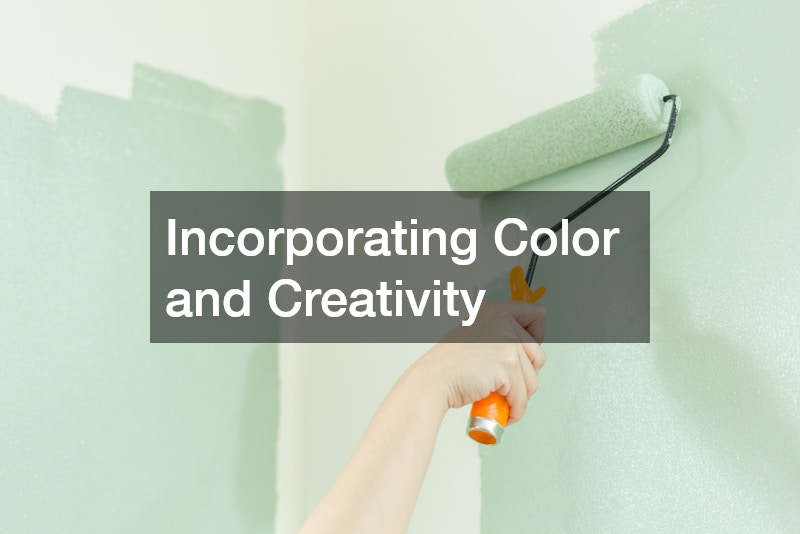Creating a home that fosters learning and curiosity can transform the way family members approach education and personal growth. An academic environment at home is more than desks and books; it is a thoughtfully designed setting that encourages exploration, focus, and creativity. Whether supporting children with schoolwork, providing a quiet space for remote learning, or offering an area for independent projects, a well-planned environment enhances productivity, motivation, and a love of learning. Families today are increasingly interested in blending functionality with enjoyment, making learning an engaging experience rather than a chore or obligation.
Designing such a space begins with understanding the unique needs of your household. Factors such as lighting, ergonomics, storage, and flexibility are essential for accommodating different types of learning activities. By ensuring the space can serve multiple purposes—reading, writing, art projects, or technology-based learning—you create a home that supports a variety of educational experiences. A stimulating academic environment can also include collaborative areas that encourage family members or friends to work together, share ideas, and solve problems creatively. These zones not only promote social learning but also reinforce critical thinking skills, communication, and teamwork, all essential for academic success.
Balancing aesthetics and practicality is equally important. A visually inviting room draws people in, encouraging them to spend more time engaging with educational tasks. Strategic organization and designated zones for different activities reduce distractions and foster a sense of purpose. Thoughtful decoration, such as artwork, educational posters, and creative storage solutions, enhances both visual appeal and functionality. Adding elements that reflect students’ interests or hobbies helps personalize the space, making learning feel more connected to their world and aspirations.
Investing in a well-designed home academic environment is more than creating a room—it fosters a culture of curiosity and provides a foundation for lifelong learning. Every choice, from furniture placement to lighting and technology, contributes to a space that supports both structured study and spontaneous discovery. In the sections that follow, we will explore twelve strategies for building a fun and functional academic environment in your home, offering practical guidance to create a space that is inspiring, efficient, and enjoyable for everyone.
1. Designing Versatile Study Zones

Creating separate zones in your home can help distinguish different types of learning activities. One corner can be dedicated to reading and quiet study, while another hosts hands-on projects such as arts and crafts, science experiments, or technology-based work. Adjustable desks, foldable tables, and modular furniture provide flexibility, allowing spaces to be adapted as learning priorities shift over time. Proper organization ensures that books, supplies, and devices have dedicated areas, minimizing distractions and promoting a productive academic environment. The visual separation of zones can also help students mentally transition between different types of activities, signaling when to focus and when to engage creatively.
A custom cabinet company can enhance this setup by offering tailored storage solutions that maximize space without sacrificing style. Custom cabinetry ensures that materials are easy to access and neatly stored, promoting responsibility and order. Well-designed cabinets also make it simple to rotate or store seasonal materials, such as holiday-themed craft supplies, science kits, or specialized textbooks. Integrating storage into the room’s overall design contributes to a cohesive, visually pleasing academic environment where students can easily locate everything they need for various activities.
Lighting is another critical consideration when defining study zones. Natural light creates a welcoming atmosphere and has been shown to improve focus and mood, while task lighting ensures proper illumination for reading, writing, or digital work. Using adjustable lamps or under-cabinet lighting can highlight specific zones, ensuring each area is optimally lit for the intended activity. Combining functional furniture, organized storage, and appropriate lighting creates a versatile academic environment where each zone supports concentration, creativity, and sustained engagement.
2. Optimizing Comfort and Ergonomics
Comfort plays a vital role in supporting sustained learning and engagement. Long periods of study or project work can strain the body if furniture does not support proper posture. Ergonomic chairs, adjustable desks, and soft seating areas allow students to maintain comfort while working. Including alternative seating like bean bags, floor cushions, or standing desks provides varied postures that can improve focus and reduce fatigue. Even small adjustments, such as supportive cushions or footrests, can make a significant difference in maintaining concentration over time.
Working with an electrician can ensure that the room’s lighting and electrical setup contribute to comfort and functionality. Properly installed lighting reduces eye strain, and strategically placed outlets allow for convenient use of laptops, tablets, and other devices without creating clutter. Electrical solutions also allow for integrating technology safely while maintaining a clean and organized study environment.
Temperature control is another essential factor. HVAC companies can help maintain a stable climate in the academic space, preventing distractions caused by excessive heat or cold. Consistent temperature and air quality improve cognitive function and attention span, allowing students to focus more effectively on learning tasks. By combining ergonomic furniture, optimized lighting, and climate control, homeowners can create a home academic environment that prioritizes both physical well-being and educational success.
3. Selecting Durable and Functional Flooring
Flooring is both a practical and aesthetic consideration in a home academic environment. Durable surfaces such as hardwood, laminate, or high-quality vinyl withstand foot traffic, moving furniture, and hands-on projects. These materials are easy to clean and maintain, ensuring that spills, craft materials, or science experiments do not damage the floor. Comfortable rugs or mats can define areas, reduce noise, and provide warmth, creating a welcoming environment for focused study or collaborative activities.
Working with flooring companies ensures the selection of materials that balance durability, comfort, and style. Professional guidance helps homeowners choose floors that match their lifestyle while supporting daily learning and creative activities. Properly chosen flooring can also improve safety, reduce slips, and enhance acoustics by absorbing sound, which minimizes distractions.
In addition to durability, consider the aesthetic impact. Floors contribute to the overall feel of the room, complementing furniture, décor, and color schemes. By investing in functional and visually appealing flooring, families can create a home academic environment that is both practical and inviting, enhancing engagement and making learning a comfortable, enjoyable experience.
4. Incorporating Color and Creativity

Color has a significant impact on focus, mood, and creativity. Soft tones, like blues and greens, can promote calmness and concentration, while brighter accents, such as yellow or orange, can stimulate energy and creativity. Incorporating a thoughtful color scheme into walls, furniture, and decorative elements can enhance the academic environment by providing visual cues that encourage engagement and productivity.
A painting company can provide expertise in selecting and applying colors that complement the room’s purpose. They can ensure precise finishes, suggest accent walls, and advise on combinations that balance focus and creativity. Personalized artwork, posters, and project displays also allow students to take ownership of the space, further encouraging engagement.
Natural elements, like plants or nature-inspired décor, enhance the atmosphere by adding freshness, texture, and calming visual interest. Combining color, professional painting, and natural elements fosters a stimulating yet serene academic environment where students feel motivated to explore, create, and learn.
5. Integrating Technology Thoughtfully
Digital tools are essential in today’s academic environment. Computers, tablets, and interactive boards provide access to educational content, research tools, and creative applications. Organizing devices with proper cable management, storage, and workstation design ensures that technology enhances learning rather than creating clutter or distraction. Balancing screen time with hands-on, offline activities encourages well-rounded development, blending digital literacy with traditional skills.
An it company can set up a reliable network, secure devices, and provide technical support for a home learning environment. This ensures smooth access to online resources, virtual lessons, and collaborative tools. Proper technology integration supports productivity, research, and interactive learning projects.
Using heavy duty cords allows safe connection of multiple devices without tangling or hazards. Combining these tools with thoughtful placement ensures an academic environment that leverages technology effectively while maintaining safety and organization.
6. Creating Interactive Learning Opportunities
Hands-on activities transform a home into an engaging academic environment. Science experiments, craft projects, and DIY kits allow students to apply knowledge practically, reinforcing understanding while encouraging curiosity. Rotating materials and projects keeps the space dynamic, offering new challenges and experiences over time.
Flexible areas for brainstorming, group discussions, or independent exploration encourage initiative and creativity. Even simple items like building blocks, educational games, or art supplies can enrich the learning experience. Providing access to a variety of tools and activities accommodates diverse learning styles, ensuring the academic environment supports both structured and self-directed learning.
7. Supporting Academic Focus with Organization

Organization is essential for maintaining concentration and minimizing distractions. Clearly labeled storage bins, shelves for books, and dedicated areas for project materials help students find what they need quickly. Keeping the space clutter-free encourages responsibility and promotes effective study habits.
A plumbing service can enhance functionality where sinks or water access are necessary for science experiments, art projects, or craft activities. Integrating these features makes the environment more versatile and practical. Combining organization with accessible resources fosters an academic environment that supports focus, creativity, and efficiency.
8. Encouraging Physical Activity
Physical activity enhances learning by improving focus, memory, and overall well-being. Incorporating areas for stretching, indoor exercises, or simple games allows students to recharge between study sessions. Even small movement breaks can reduce fatigue and increase attention span, creating a more effective academic environment.
Electricians can assist with safely installing lighting and power for equipment used in activity areas. Well-planned movement spaces complement study zones, encouraging a balance between mental and physical activity. Supporting regular movement contributes to a holistic home academic environment that nurtures both mind and body.
9. Leveraging Community Resources
Connecting the home academic environment to external resources enriches learning. Private elementary programs, local libraries, museums, and workshops provide exposure to diverse ideas, new skills, and practical applications. Incorporating experiences from these resources at home helps students apply knowledge in real-world contexts, enhancing understanding and retention.
Bringing insights from community programs into the home reinforces lessons learned externally and fosters a sense of continuity between formal and informal education. This approach strengthens the academic environment by encouraging curiosity, broadening perspectives, and promoting engagement with learning beyond the home.
10. Fostering a Calm and Focused Atmosphere

A serene and organized environment is essential for maintaining focus. Minimalist décor, soft lighting, and quiet areas encourage reflection, study, and creative thinking. Limiting distractions, such as visual clutter or excessive noise, promotes productivity and reduces stress.
Strategically arranging furniture, supplies, and décor creates a sense of order and calm. Calming elements like plants, water features, or soft textures enhance the atmosphere. A focus-friendly environment allows students to immerse themselves in learning tasks, creating a supportive academic environment that balances concentration and relaxation.
11. Integrating Practical Life Skills
A well-rounded academic environment includes practical life skills alongside traditional subjects. Activities such as cooking, budgeting, basic home repairs, and time management teach problem-solving, critical thinking, and independence. Students can apply lessons learned in real-world scenarios, strengthening their ability to adapt and plan.
A takeout restaurant can inspire lessons on nutrition, portioning, business operations, or customer service. Students can simulate menus, pricing, or food preparation at home, connecting academic concepts to everyday life. Integrating practical exercises helps children understand the relevance of their learning and encourages responsibility, making the home academic environment both educational and functional.
12. Cultivating a Personalized and Inspiring Space
A home academic environment should reflect the interests and personalities of its users. Personalized décor, inspirational quotes, and spaces for hobbies or passions encourage engagement and motivation. Flexible workstations allow students to take ownership of their learning area, increasing their investment in both structured and creative projects.
Plumbing service and HVAC companies can ensure the environment remains comfortable and practical. Access to water for experiments or art projects, along with consistent temperature and ventilation, creates a safe and inviting space. Incorporating these elements, along with thoughtful furniture, lighting, and technology, cultivates an academic environment that supports continuous learning, curiosity, and inspiration.
Designing a home that nurtures learning, creativity, and focus requires careful planning and attention to detail. An academic environment is more than furniture and supplies; it balances comfort, functionality, and inspiration. By considering ergonomics, organization, lighting, color, technology, and movement, homeowners can create a space that fosters curiosity, engagement, and academic success.
Working with professionals such as custom cabinet companies, electricians, flooring companies, painting companies, HVAC specialists, and IT experts ensures the space is functional, safe, and tailored to household needs. Durable materials, thoughtful layouts, and flexible zones allow the environment to adapt as learning styles and priorities evolve. Community resources, including private elementary programs and local workshops, further enrich the home academic environment by bridging home and real-world experiences.
A personalized and inspiring academic environment encourages ownership, creativity, and a lifelong love of learning. By blending structure, comfort, and exploration, families can create a home where education is engaging, practical, and enjoyable. This approach ensures that children and adults alike can thrive academically while developing skills that extend beyond the classroom, cultivating curiosity, responsibility, and a passion for discovery.
